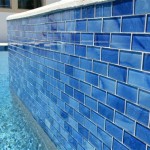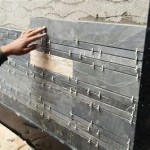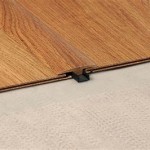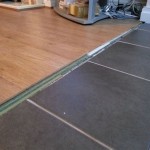How to Install Bathroom Shower Floor Tile
Installing tile on a bathroom shower floor represents a significant home improvement project that can substantially enhance the aesthetic appeal and functionality of the space. A properly tiled shower floor is not only visually pleasing but also provides a waterproof and durable surface. This article provides a comprehensive guide outlining the essential steps involved in the installation process, from initial preparation to final sealing.
Planning and Preparation
Before commencing any physical work, meticulous planning is crucial. This stage involves accurate measurements, selection of appropriate materials, and a thorough assessment of the existing shower floor structure. Neglecting these preliminary steps can lead to costly errors and delays later in the project.
1. Accurate Measurements: The first step is to precisely measure the dimensions of the shower floor area. These measurements will determine the quantity of tile needed and will also be crucial in calculating the necessary slope for proper drainage. It is recommended to draw a simple diagram of the shower floor, noting the dimensions in detail. This diagram will serve as a reference throughout the installation process.
2. Tile Selection: Choosing the right type of tile is paramount. Shower floor tiles should be non-slip, water-resistant, and durable enough to withstand frequent exposure to moisture and cleaning agents. Mosaic tiles, porcelain tiles, and certain types of natural stone are commonly used for shower floors. Consider the size and shape of the tiles as well. Smaller tiles, like mosaics, generally provide better traction due to the increased number of grout lines. Ordering 10-15% more tile than calculated is a standard practice to account for cuts, breakage, and potential future repairs.
3. Material Procurement: In addition to the tiles, several other materials are essential. These include thin-set mortar (specifically formulated for wet environments), grout, grout sealer, backer board (if necessary), waterproofing membrane, mixing bucket, notched trowel, sponge, level, measuring tape, tile saw, safety glasses, gloves, and a dust mask.
4. Structural Assessment: Inspect the existing shower floor to ensure it is structurally sound and level. Any cracks, weak spots, or unevenness must be addressed before proceeding. If the existing floor is severely damaged or unsuitable, it may be necessary to install a new backer board. Backer board provides a stable and waterproof substrate for the tile.
5. Shower Drain Considerations: The drain needs to be clean and in good condition. The flange should be positioned correctly to ensure a watertight seal with the surrounding tile. Verify the drain body is correctly installed and can accommodate the type of tile selected.
Preparing the Substrate
The substrate, the surface beneath the tile, is the foundation of a successful tile installation. Proper preparation of the substrate is crucial to ensure the tile adheres correctly and the shower floor remains waterproof. Failing to adequately prepare the substrate can lead to tile cracking, grout failure, and water damage.
1. Cleaning the Existing Surface: Thoroughly clean the existing shower floor, removing any dirt, debris, soap scum, or old adhesive. A scraper or putty knife can be used to remove stubborn residue. Vacuum the area to eliminate any remaining particles. A clean surface ensures proper adhesion of the thin-set mortar.
2. Installing Backer Board (If Necessary): If the existing floor is damaged or deemed unsuitable, install a cement backer board over the subfloor. Cut the backer board to fit the shower floor, leaving a small gap (approximately 1/8 inch) between the board and the walls. Secure the backer board to the subfloor with screws specifically designed for cement board, spacing them according to the manufacturer's instructions. Tape the seams between the backer board panels with fiberglass mesh tape and cover with thin-set mortar.
3. Applying Waterproofing Membrane: Even with backer board, applying a waterproofing membrane is highly recommended. This creates an additional layer of protection against water damage. There are several types of waterproofing membranes available, including liquid membranes and sheet membranes. Liquid membranes are typically applied with a brush or roller, requiring multiple coats for complete coverage. Sheet membranes are self-adhesive and are applied directly to the substrate. Follow the manufacturer's instructions carefully when applying the waterproofing membrane, paying close attention to seams and corners.
4. Slope Creation: A proper slope is essential for effective drainage. The shower floor should slope towards the drain at a rate of approximately ¼ inch per foot. This slope can be achieved by using a pre-sloped mortar bed or by applying self-leveling compound with an integrated slope. Accuracy in this step is crucial to prevent water from pooling on the shower floor.
5. Dry Layout: Before applying any mortar, perform a dry layout of the tiles. This involves arranging the tiles on the shower floor without adhesive to determine the best layout and identify any necessary cuts. Start by centering a tile over the drain and working outwards. This will help ensure a symmetrical and aesthetically pleasing appearance. Mark the locations of any cuts needed on the tiles.
Tile Installation
With the substrate properly prepared, the tile installation process can begin. This stage requires patience and attention to detail to ensure a professional-looking and durable shower floor.
1. Mixing the Thin-Set Mortar: Prepare the thin-set mortar according to the manufacturer's instructions. Use a mixing bucket and a mixing drill to achieve a smooth, consistent consistency. Avoid adding too much water, as this can weaken the mortar. Allow the mortar to slake (rest) for the recommended time before using it.
2. Applying the Mortar: Using a notched trowel, apply a layer of thin-set mortar to a small section of the shower floor, no more than can be tiled in about 15-20 minutes. The size of the notch on the trowel will depend on the size of the tiles being used. Hold the trowel at a 45-degree angle and create ridges in the mortar. These ridges help to ensure proper adhesion of the tiles.
3. Setting the Tiles: Carefully place the tiles onto the mortar, pressing them firmly into place. Use a slight twisting motion to ensure good contact between the tile and the mortar. Maintain consistent spacing between the tiles using tile spacers. Regularly check the level of the tiles using a level to ensure a flat and even surface. Remove any excess mortar that squeezes up between the tiles.
4. Cutting Tiles: Use a tile saw to cut tiles as needed to fit around the drain and along the walls. Always wear safety glasses when using a tile saw. For curved cuts, a wet saw with a diamond blade is recommended. Smooth the edges of the cut tiles with a rubbing stone or sandpaper.
5. Grouting: Allow the thin-set mortar to cure completely, typically for 24-48 hours, before grouting. Remove the tile spacers and clean any debris from the grout lines. Mix the grout according to the manufacturer's instructions. Apply the grout to the tile surface using a grout float, pressing it into the grout lines at a 45-degree angle. Remove excess grout with the grout float. After about 15-30 minutes, use a damp sponge to clean the tile surface, removing any remaining grout residue. Rinse the sponge frequently in clean water. Allow the grout to cure completely, typically for 48-72 hours.
6. Sealing: After the grout has cured, apply a grout sealer to the grout lines. This will help to protect the grout from staining and water damage. Apply the sealer according to the manufacturer's instructions. Reapply the sealer every year or two to maintain its effectiveness.
Final Steps and Considerations
After the tile and grout have been installed and sealed, several final steps are necessary to complete the project and ensure the long-term performance of the shower floor.
1. Cleaning the Tile Surface: Thoroughly clean the tile surface with a mild detergent and water to remove any remaining grout haze or residue. A clean tile surface will enhance the appearance of the shower floor and prevent the build-up of soap scum.
2. Installing the Shower Drain Cover: Install the shower drain cover, ensuring it is securely in place and allows for proper drainage. The drain cover should be flush with the surrounding tile surface. Apply silicone caulk around the drain cover to create a watertight seal.
3. Caulking: Apply a bead of silicone caulk along the perimeter of the shower floor where it meets the walls. This will help to prevent water from seeping behind the tile and causing damage. Choose a caulk that is specifically designed for wet environments and is mold and mildew resistant.
4. Ventilation: Ensure adequate ventilation in the bathroom to help prevent the growth of mold and mildew. Install an exhaust fan if one is not already present. Use the exhaust fan during and after showering to remove excess moisture from the air.
5. Regular Maintenance: Regular maintenance is essential to prolong the life of the shower floor. Clean the tile and grout regularly with a mild detergent and water. Avoid using harsh chemicals or abrasive cleaners, as these can damage the tile and grout. Repair any cracks or damage to the tile or grout promptly to prevent water damage.

3 Shower Pan Choices For A Solid Tile Floor Installation Fine Homebuilding

How To Build A Shower Pan Install Tile Floor Homeadvisor

How To Build A Shower Pan Install Tile Floor Homeadvisor

3 Shower Pan Choices For A Solid Tile Floor Installation Fine Homebuilding

How To Build A Shower Pan Install Tile Floor Homeadvisor

How To Retile A Shower Floor Art Tile Renovation

Tips And Tricks To Lay Marble Basketweave Floor Tile The Diy Playbook

Bathroom Renovation Tiling The Shower From Bathtub To Walk In Remodelando La Casa

How To Install A Shower Pan In Your Bathroom Bob Vila

How To Install A Shower Pan In Your Bathroom Bob Vila
Related Posts








